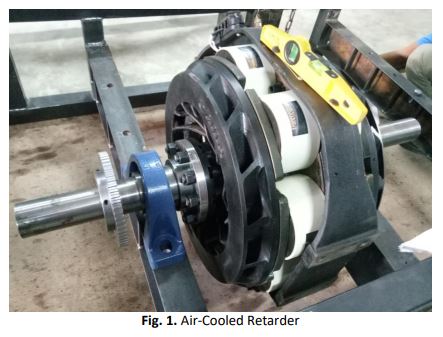Numerical Simulation of High-Speed Rotor for Air-cooled Eddy Current Dynamometer
DOI:
https://doi.org/10.37934/arfmts.96.1.153167Keywords:
Rotor, airflow, temperature, dynamometerAbstract
The key feature of air-cooled dynamometer is the geometry of the rotor, which played a vital role in effective heat rejection. Dual application is limited for air cooled eddy current dynamometer due to excessive heat generation when the operating speed is up to a certain range. The aim of this research is to observe the air flow pattern and temperature distribution on the rotor of the air-cooled dynamometer with different geometry designs. In addition, the air flow and heat transfer simulation were carried out by using ANSYS software. Besides, the setting of normal size mesh was proposed in all design cases to reduce the computational time and the mesh files size of the simulation. Furthermore, a total of four configurations of rotating domain were designed and created using SolidWorks software, with each one differentiated with the features of holes and cover. The results of air flow velocity contour were compared with those of without the cover and holes on the rotor design. The optimum design in air motion distributed within all cases of numerical simulation were then observed and compared. To validate the simulation setup, experimental data were used to validate the airflow and heat transfer coupling simulation models. The results revealed that an improvement with more air volume movement can be observed at medium range and high velocity range for all models with cover features over the models without cover. Besides, the results also shows that the influences of hole features on air flow velocity were less significant as compared to the one with cover features. Also, the rotor design with cover and without holes were found to be the best configuration as it allows the as high as 27.7% greater air flow dynamic to achieved lowest steady state temperature as compared with those of baseline design. The Design C also improved in term of temperature as compared to the simple model of plane rotor, with as high as 11.6% reduction in overall temperature. Through the results of this analysis, it was justifiable that the Design C can be suggested as the best-case scenario for further experimental study. These results will serve as a basis for rotor design to improve the performance of the air-cooled eddy current dynamometer.
Downloads
































